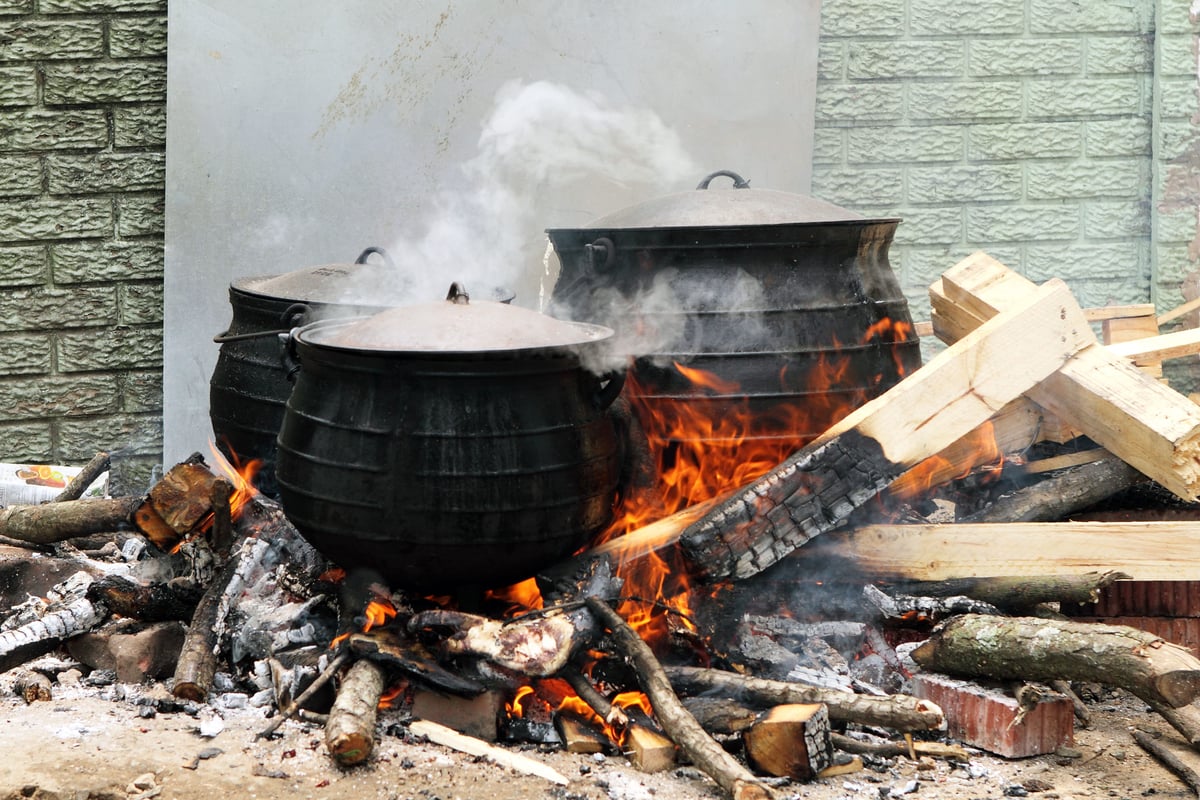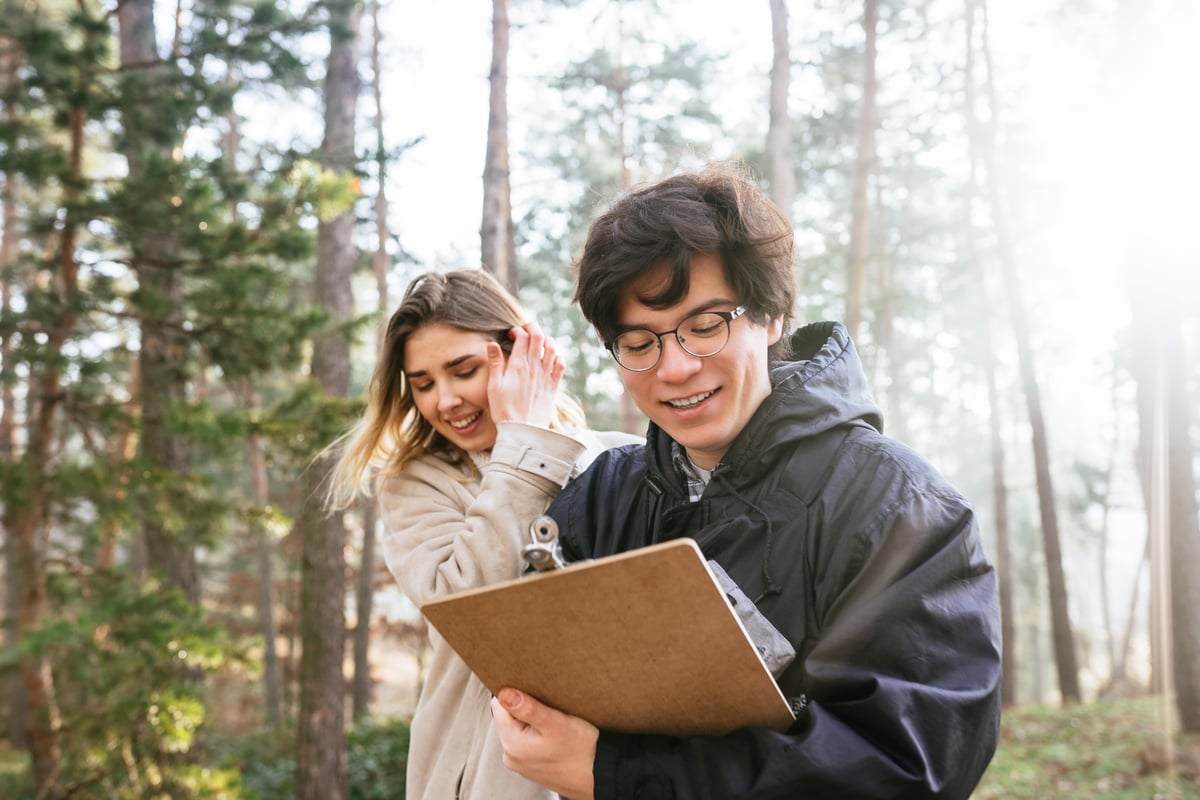To a layman’s eyes, investing in cookstoves wouldn’t necessarily equate to mitigating carbon emissions.
This, however, is a misconception. Investments in cleaner, more efficient cookstoves are helping the environment and the world at large at a staggering level.
In this article, we’ll use our Kenya- and Cameroon Cookstoves projects to explain the social-, environmental- and financial impact these kinds of projects have.
Why do we need to invest in cleaner cookstoves?

Underdeveloped regions generally have limited access to energy. This makes burning wood essential for cooking, heating, and water purification.
Many people use traditional cooking methods such as placing a few stones around an open fire to create a makeshift stove.

While it serves its purpose, this cooking method has severe consequences for people’s health, their domestic lives and the environment.
Moreover, burning wood for these purposes is one of the most significant contributors to global carbon emissions, and unsustainable harvest methods put pressure on existing woodlands through increased deforestation.
What are the benefits of investing in cleaner cookstoves?
On average, a household using traditional cooking methods consumes between 5 and 12 kg of wood daily.
Extrapolate that to a global scale, and you understand the impact of introducing cleaner, more efficient cookstoves.
Simultaneously, by investing in alternative fuels, such as agricultural waste pellets, we reduce the emissions caused by cooking even more.
While the global impact of cooking and shifting to clean cooking still requires additional research, the local benefits are clear.
For example: People that use these stoves are exposed to toxins that cause respiratory diseases.

Burning solid fuels such as wood and charcoal releases carbon dioxide, black carbon, methane, and ozone-producing gases such as carbon monoxide.
According to estimations by the World Health Organization, inhaling smoke from traditional cookstoves is equivalent to smoking two packs of cigarettes per day!
In Kenya alone, between 10.00 and 20.000 people each year from pollution. More than half of these victims are children.
Ironically enough, these same children are often responsible for collecting the wood used. This time-consuming task prevents them from other activities such as attending school.
What role does DGB Group play in distributing cookstoves?
DGB currently invests in two different cookstoves projects. The Sawa Cookstove Project in Cameroon, and The Hongera Energy Efficient Cookstove Project in Kenya.
Both projects will manufacture and distribute energy-efficient, locally and sustainably-made cookstoves to individuals and communities.
These stoves will reduce the use of charcoal and wood by more than 50%. Thus, each energy-efficient stove saves 2,85 tonnes of CO2 emission yearly when compared to conventional, open-fire cooking.
Next to reducing fuel used, these stoves also provide cleaner, more complete combustion.
This results in fewer greenhouse gas in black carbon emissions and improves air quality within the community.
Moreover, by reducing wood use, we also reduce this source of deforestation, allowing our afforestation and conservation projects to be more effective.
In total, these projects will distribute 300.000 cookstoves over their lifetime, effectively compensating 3,56 million tonnes of CO2 emissions.

How does DGB Group manage these cookstove projects?
We’re not in this alone. In Kenya, we’re partnered with the Applied Institute of Agriculture and Technology (AIAT), and in Cameroon, we’re working with Green Zone, an agricultural and agroforestry company focused on sustainable development.
It is through this local presence that we’re able to make a difference. The manufacturing and distribution of these stoves are designed as a carbon offsetting project under the Gold Standard methodology ‘’Technologies and Practices to Displace Decentralized Thermal Energy Consumption’’.
Independent auditors measure these projects through Gold Standard methodology, after which we’re rewarded with carbon credits, to be verified in 2022 and onwards.
Producing positive change that benefits everyone is essential to creating a successful and sustainable long-term project.
That’s why our Kenya and Cameroon projects both focus on the environment and the communities in and around the project area.
For this, we have the right to 100% of the carbon credits originated and exclusive carbon and marketing rights.
How are these cookstove projects financed?
These projects are expected to create a total of over 3,6 million credits over their 6-year project lifetime (approximately 600,000 carbon credits per annum).
In selling these credits, we’re focused on long-term offtake agreements which help us scale our business.
These are legal contracts in which a buyer agrees to purchase a set amount of carbon offsets at set price points several years into the future.
This gives us predictability regarding how many carbon offsets intend to be sold and the revenue these projects will generate.
Furthermore, this helps drive confidence in the value of these projects and de-risks the capital investments we’ve made and are making.

These long-term agreements are also beneficial to the buyers. They get access to high-quality, verifiable offsets at a reasonable price in an environment where cost is likely to rise as demand outstrips supply.
The agreements also help long-term planning and strategy formulation for companies, providing a definitive picture of costs associated with their net-zero targets.
These agreements create a space for a genuine, innovative partnership between us and our clients that simply wouldn’t exist if we sold our credits year-by-year on the spot market.
Conclusion
In short, investing in cookstoves reduced the number of trees removed from forests for cooking fuel.
Second, they will reduce the number of greenhouse gases released into the atmosphere during the cooking process while also creating a positive impact at a domestic level by improving health and overall well-being.
For instance, by reducing the amount of time spent daily collecting firewood. By co-developing projects that will manufacture and distribute energy-efficient, sustainable, locally-produced cookstoves, we’ll reduce the usage of charcoal and wood by more than 50% for 300.000 households.
The offtake agreement for the Hongera Energy Efficient Cookstove Project has recently been signed, but we’re still looking for partners for the Sawa Cookstove Project in Cameroon.
Contact us through the information below to learn more about this fantastic project and the opportunities it provides.







